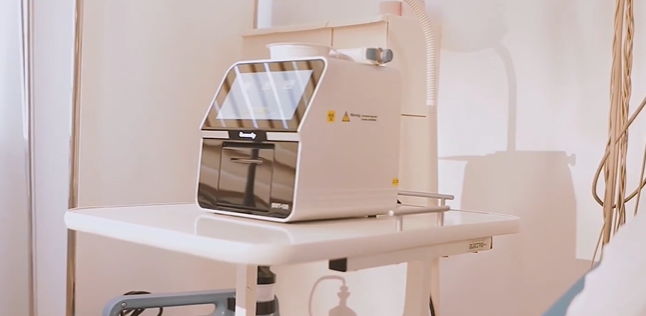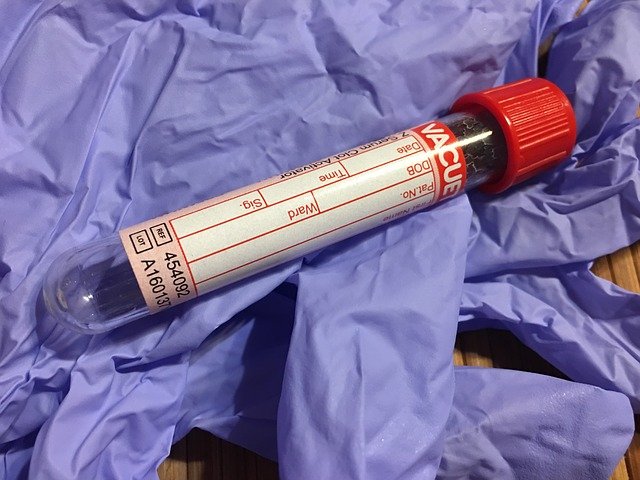This article focuses on molecular diagnostics, a segment of in vitro diagnostics. Molecular diagnostics is the fastest growing in vitro diagnostic field in recent years, and is expected to maintain a high growth rate of 30-50% in the next 3-5 years.
Molecular diagnosis is a technology that applies molecular biology methods to make diagnosis by detecting changes in the structure or content of genetic material of the tested individual or the virus or pathogen it carries. Compared with the mature immunodiagnosis and biochemical diagnosis, molecular diagnosis is in the rapid growth period and is the fastest growing segment in the field of
In Vitro Diagnosis (IVD).
Molecular diagnosis has the advantages of shorter detection time, higher sensitivity and better specificity, and is widely used in infectious diseases, blood screening, genetic diseases, tumor concomitant diagnosis and other fields.
1.Molecular diagnostic technology and principle
Molecular diagnosis mainly includes
PCR (qPCR and dPCR), second-generation sequencing (NGS), fluorescence in situ hybridization (FISH), gene chips, and so on. Among them, PCR is currently the most mature technology platform with the largest market share.
Compared with molecular hybridization and sequencing technologies, the main advantage of PCR technology is its high sensitivity and ease of diffusion; the main limitation of PCR technology is that the detection sites are single and known, and the number of genes that can be covered by multiplexed gene detection is limited. At present, PCR has developed to the third generation of digital PCR (dPCR), which will remain the mainstream technology platform for molecular diagnostics in the near future.
Sequencing technology is developing rapidly, and although the market share is low, the market growth rate is the fastest. Among them, NGS (high-throughput sequencing) is the most widely used technology in the field of sequencing, and has become the main choice for many sequence variation analysis and research applications. However, due to the complexity of experimental operation and high cost, it is still in the initial stage of clinical application and has a broad application prospect.
2. Molecular Diagnostic Market
The global molecular diagnostic industry has been growing at an average annual rate of more than 10 % in recent years, which is higher than other segments of in vitro diagnostics.
3. Molecular Diagnostic Industry Chain
The upstream raw materials of molecular diagnostic industry chain are firmly held by developed countries' enterprises. Midstream kits and instruments have been gradually localized in China. The downstream is dominated by various medical service institutions and third-party medical laboratories.
The upstream of molecular diagnostics is the suppliers of instruments and consumables. Upstream instruments and equipments are mainly gene sequencers, PCR amplifiers and nucleic acid extractors.
The mid-end PCR amplifiers are basically localized in China. The gene sequencer industry, which is more difficult to develop, has a monopoly pattern and is dominated by Illumina, Life Tech (acquired by Thermo Scientific for $13.6 billion) and Roche. The market shares of LifeTech and Roche were 9.88% and 5.32%, respectively.
Upstream consumables include enzymes, primers, probes, etc. Upstream raw materials manufacturers are mainly giant companies, including Roche, Meridian life science, Solulink, Surmodics and so on. Due to the high technology development difficulty and low maturity of industrialization, Chinese medical device companies are mainly agents.
The midstream of the industry chain is blossoming. There are many manufacturers developing corresponding diagnostic products based on equipment, and diagnostic kits are basically localized in China.
The downstream of the industry chain mainly includes central laboratories of medical institutions, third-party laboratories (ICL) and medical checkup centers, etc.
4. New molecular diagnosis: liquid biopsy
Liquid biopsy is a technology to screen or diagnose diseases through body fluids (mainly blood). It has great potential in precision medicine for oncology. Compared with traditional puncture biopsy, liquid biopsy has the features of easy sampling, less invasive and less painful.
Currently, the peripheral blood tumor information detected by liquid biopsy includes Circulating Tumor Cell (CTC), Circulating Tumor DNA (ctDNA), Cell- free DNA (CfDNA) and Exosomes. The technical difficulty of liquid biopsy (especially CTC) is the low target level in blood and the difficulty of enrichment.
There is relatively more research on CTC technology and ctDNA technology in the market. CTC technology started earlier and clinical studies are more abundant. However, the high technical difficulty, low detection rate and high heterogeneity have limited the development of this technology. Compared with CTC, ctDNA is relatively easy to capture. The detection means are also more mature. And ctDNA has a unique advantage in detecting driver mutations. ctDNA is now the most commonly used liquid biopsy technology in the market.
The main applications of liquid biopsy are concomitant diagnosis, disease monitoring, and early screening in the field of oncology. Among them, ctDNA is more sensitive to detect mutations and is suitable for concomitant diagnosis to guide drug use. The number of CTC is highly correlated with tumor status and is expected to have better performance in disease monitoring and other aspects.
5. Summary and analysis of molecular diagnosis
Molecular diagnosis has many subdivision techniques and wide application prospects. The applications of molecular diagnosis are relatively mature such as non-invasive prenatal screening (NIPT), concomitant diagnosis, infectious disease detection, blood screening, etc., and early tumor screening, novel microbial detection, pharmacogenomics, etc., which are currently in the budding or rapid development stage.
From different technology platforms, on the one hand, PCR will still be recognized by the market. The application of mature mainstream molecular breakthrough technology platform, the rapid development of emerging technologies such as liquid biopsy, digital PCR, NGS, etc. will further enrich the application field of molecular diagnostics. PCR has full potential as a reserve force to enter clinical warming in the future.
On the other hand, in view of the complex application scenarios of molecular diagnosis and the diverse clinical needs of various patients. The emergence of new technologies is not to completely replace traditional technologies, but to better complement and improve the existing technology platform. For example, PCR technology has not completely eliminated FISH technology even after decades of development. The latter is still the "gold standard" for detecting HER-2 gene status.
Depending on the application scenarios and testing needs, NGS and PCR have their own advantages; PCR is suitable for the detection of known genetic loci, high sensitivity requirements and tissue samples, while NGS is more advantageous for the detection of unknown genes and blood ctDNA testing. The two are complementary and have a long-term coexistence.



